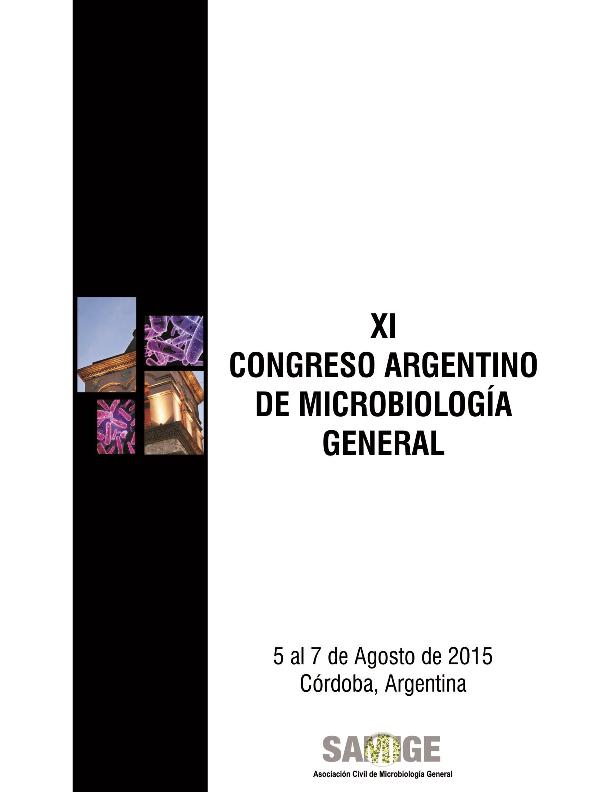Evento
Isolation and use of extremophiles in the determination of biochemical oxygen demand in saline wastewater
Grosselli, Melina del Rosario ; Aparicio, Juan Daniel
; Aparicio, Juan Daniel ; Villegas, Liliana Beatriz
; Villegas, Liliana Beatriz ; González, Patricia; Almeida, César Américo
; González, Patricia; Almeida, César Américo
 ; Aparicio, Juan Daniel
; Aparicio, Juan Daniel ; Villegas, Liliana Beatriz
; Villegas, Liliana Beatriz ; González, Patricia; Almeida, César Américo
; González, Patricia; Almeida, César Américo
Tipo del evento:
Congreso
Nombre del evento:
XI Congreso Argentino de Microbiología General
Fecha del evento:
05/08/2015
Institución Organizadora:
Sociedad Argentina de Microbiología General;
Título del Libro:
XI Congreso Argentino de Microbiología General
Editorial:
Sociedad Argentina de Microbiología General
Idioma:
Inglés
Clasificación temática:
Resumen
Biochemical oxygen demand (BOD) is a useful parameter for assessing the biodegradability of dissolved organic matter in water. At the same time, this parameter is used to evaluate the efficiency with which certain processes remove biodegradable natural organic matter. However, the values of BOD in saline water are very low because NaCl destroy the seed. Therefore the incorporation of a suitable selection of bacteria (which is not always easy to obtain) is required. In this sense the extremophile bacteria, particularly halophilic bacteria or halophytes can contribute to the development of this technique. The objective of this work was to develop a BOD analysis protocol for the analysis of saline effluent. Within this context a halophilic microorganisms was isolated from Salinas del Bebedero, San Luis, Argentina. Salt sample was cultured in agar Dussault and Lachance. Subsequently, the isolated colonies were cultured in medium Dussault and Lachance broth for 7 days at 37ºC with constant stirring (180 rpm). Subsequently the nucleic acid extraction method was performed by Brosius et al., based on the lysis of the cells with glass beads, and 10% SDS. To amplify the variable region V3-V5, 16S rDNA primers described as F344-R915 (Stahl et al, 1991) were used: 344F: 5?- ACG GGG CGC YGCAGCAGG GA-3 ?and 915R: 5?- GTG CTC CCC CGCCAATTC CT-3 ?; Halorubrum salsolis DNA was used as control. The size of the reaction products was characterized on agarose gel 1% and evaluated on an image analyzer. The molecular weight was determined by comparison with molecular weight marker 100 bp DNA Ladder (Promega). The PCR fragments were sequenced by Macrogen (Korea), with Reaction Kit READY PRIMS a model ABI prisma373A sequencer (PE AppliedBiosystems). The sequencing results were analyzed by comparison with 16S rRNA genes databases (GenBank). The organism under study under study showed a 100% identity to gender Haloarcula sp. One milliliter of the strain (106 cell per mL) was used as seed in the BOD analysis protocol. Standard solution of glucose-glutamic acid (BOD = 20 mg L-1) with different concentrations of NaCl (5%, 10%, 20%, 30% and 40%) were used. BOD bottles were incubated at 20 °C for 5 days. No significant differences were found among differents samples, since their organic matter content was similar (CV <2.1%). In conclusion, Haloarcula sp can be used in the determination of BOD in saline effluent.
Palabras clave:
EXTREMOPHILES
,
BOD
,
SALINE WASTEWATER
,
HALOARCULA
Archivos asociados
Licencia
Identificadores
Colecciones
Eventos(PROIMI)
Eventos de PLANTA PILOTO DE PROC.IND.MICROBIOLOGICOS (I)
Eventos de PLANTA PILOTO DE PROC.IND.MICROBIOLOGICOS (I)
Citación
Isolation and use of extremophiles in the determination of biochemical oxygen demand in saline wastewater; XI Congreso Argentino de Microbiología General; Córdoba; Argentina; 2015; 54-54
Compartir



